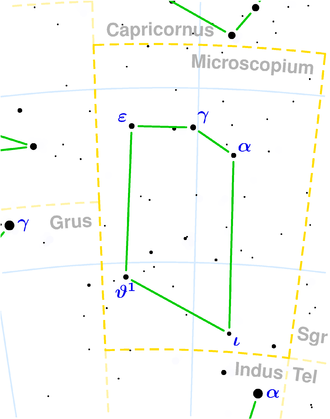NGC 6958
| Galaxy NGC 6958 |
|
|---|---|

|
|
| Photo from the Hubble Space Telescope | |
| AladinLite | |
| Constellation | microscope |
|
Position equinox : J2000.0 , epoch : J2000.0 |
|
| Right ascension | 20 h 48 m 42.6 s |
| declination | -37 ° 59 ′ 51 ″ |
| Appearance | |
| Morphological type | E-S0: |
| Brightness (visual) | 11.3 mag |
| Brightness (B-band) | 12.3 mag |
| Angular expansion | 2.5 ′ × 1.9 ′ |
| Position angle | 107 ° |
| Surface brightness | 13.1 mag / arcmin² |
| Physical data | |
| Redshift | 0.009050 ± 0.000043 |
| Radial velocity | 2713 ± 13 km / s |
|
Stroke distance v rad / H 0 |
(122 ± 8) · 10 6 ly (37.4 ± 2.6) Mpc |
| history | |
| discovery | John Herschel |
| Discovery date | August 24, 1834 |
| Catalog names | |
| NGC 6958 • PGC 65436 • ESO 341-15 • MCG -6-45-17 • IRAS 20455-3810 • 2MASX J20484256-3759505 • SGC 203439-5217.1 • LDCE 1383 NED039 | |
NGC 6958 is an elliptical galaxy E / S0 in the constellation Microscope in the southern sky , which is an estimated 122 million light years away from the Milky Way .
The object was discovered on August 24, 1834 by the astronomer John Herschel with his 18.7 inch reflector telescope and was later included in his New General Catalog by Johan Dreyer .
